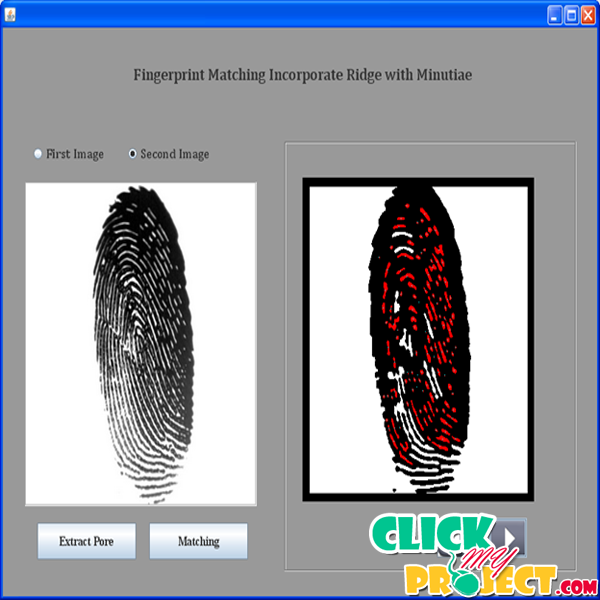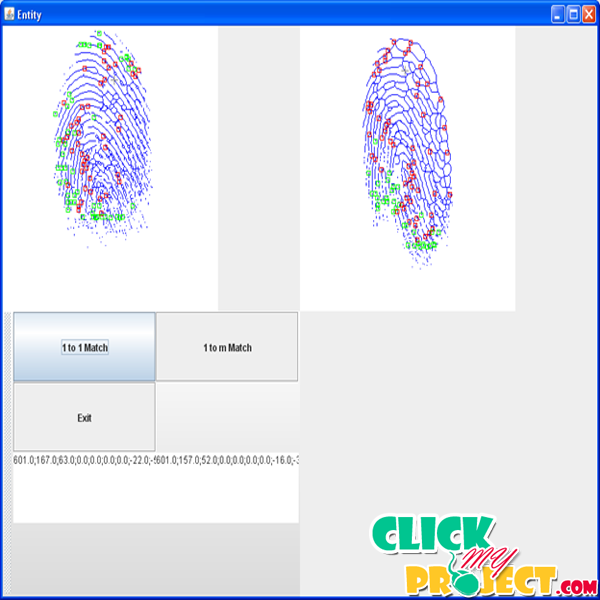Fingerprint Matching Incorporating Ridge Features With Minutiae
₹2,500.00
10000 in stock
SupportDescription
Thus our paper proposed a new class of fingerprint matching algorithm to find out the difference between the two fingerprints and then comparison ratio of the fingerprints. This uses a different algorithm that has both ridge features and the conventional minutiae feature. By using these features the recognition of performance against non-linear deformation in fingerprints is increased. The defined ridge feature in our scheme has four elements to calculate, they are: ridge count, ridge length, ridge curvature direction, and ridge type and the conventional minutiae features has minutiae type, orientation, and position. Each and every element has a separate function to combine the two fingerprints. Thus the above ridge features have little more advantages in that we can represent the topology information in entire ridge patterns existing between two finer points and are not changed by non-linear twist of the finger. To extracting the ridge features, we need to convert the raw image into skeletonized image. The term skeletonized image defined that the basic image is in raw form (i.e.) the image as it is as scanned, and we are not able to make the ridge features in that raw image. For making this we find the ridges and image is redraw as blue lined image and the ridge points. With the help of the both features we have a new matching algorithm to find difference between the fingerprints and to detect the matched pairs. This can match the each and every skeletonized image with the another image to get the maximum score is to be computed and used as the final matching score of two fingerprints. Accordingly, it is hard to understand and implement these methods accurately. Considering the facts mentioned above, instead of developing complex distortion models or elaborate minutiae alignment algorithms, we propose a new and simple matching scheme by incorporating conventional minutiae features and additional ridge features associated with corresponding minutiae sets. The matches were conducted for the databases to compare the proposed method with the conventional minutiae-based method. The pro-posed method achieved higher matching scores.





